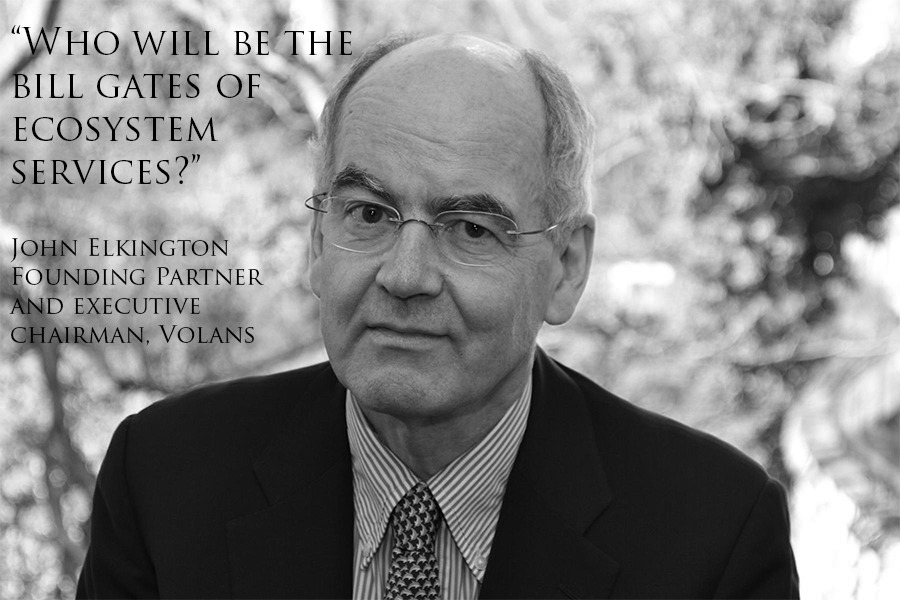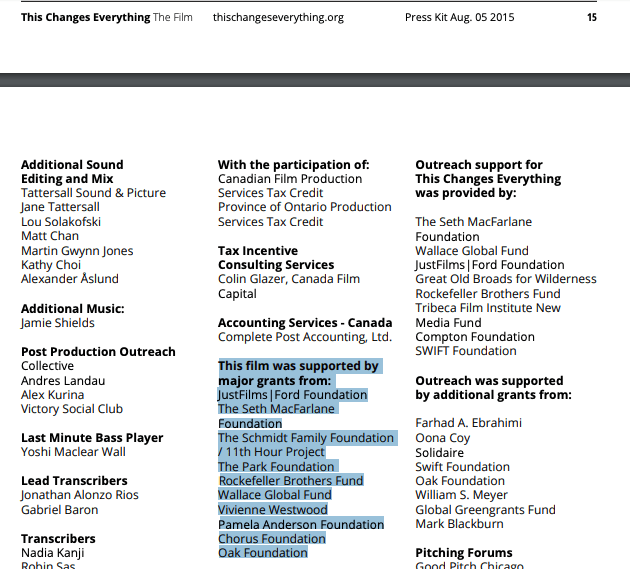Oct 31
20202
Access Now, Amnesty International, Avaaz, Foundations, Pacifism as Pathology, Whiteness & Aversive Racism
2Africa Africa Athena Center For Humane Technology (CHT) Colonialism Imperialism Data Colonies Elon Musk Facebook Fourth Industrial Revolution Google Mark Zuckerberg SpaceX The Social Dilemma Youth Exploitation
It’s Not a Social Dilemma – It’s the Calculated Destruction of the Social [The Enclosure of Africa, Part II]
October 30, 2020
Part two of a three-part investigative series. [Part 1] [Part 3]
2Africa: Digital Colonization Meets White Paternalism – The Facebook Enclosure of Africa
“Zuckerberg’s team has another related project named 2Africa. A “mission”, as they call it… Civilians have been quite silent about it this time, but not because they don’t have an opinion. It looks like many civil society groups in the continent are financed by Facebook itself. Ironic, right? Well, it seems like the missionary-like good guys from up North are going to save the world again.”
— August 18, 2020, “There’s a 2.0 form of colonialism happening under our very eyes”
“Facebook realizes it’s running out of room to grow in developed markets. Instead of waiting for developing countries to build adequate infrastructure for its apps, Facebook wants to help develop the infrastructure and lock users into its ecosystem.”
— May 22, 2020, Facebook Will Bring Expanded Internet Access to Africa in $1 Billion Project
“Big Tech corporations are wreaking havoc on the Global South. There’s a crisis in the tech ecosystem, and it’s called digital colonialism.”
— March 13, 2019, “Digital colonialism is threatening the Global South”
“Many countries will face a shrinking population. For Europe, this challenge may come sooner. The region is projected to face the highest dependency ratio—the number of people of nonworking age (over 65) compared with those of working age—by 2050. At 75 percent, this ratio is higher than for any other region… Not all populations are shrinking or getting older, though. Africa—the only region whose population is expected to grow more than 1 percent a year—will have the youngest median age, 25, by 2050.” [Source: International Monetary Fund, Finance & Development, March 2020]
Today, four in ten people, that is, 42% of the global population, are aged under 25. Now consider that 76% of youth aged 18–24 use Facebook. [Source] “While the majority of most populations in the Global North are decreasing or flatlining, in Sub-Saharan Africa the populations are growing with nearly half of the world’s youth living in Sub-Saharan African countries.” [Source]“As Africa meets the 4IR Fourth Industrial Revolution], its youth will be one of its most important assets”
—August 25, 2020, World Economic Forum, How can Africa succeed in the Fourth Industrial Revolution?
According to a 2019 Pew Research Center analysis, for the first time in modern history, the planet’s human population “is expected to virtually stop growing by the end of this century, due in large part to falling global fertility rates.” [Source] In a mere ten years, by 2030, it is expected that one in five people will be African. [Source] By 2100, half of all babies born in the world – will be born in Africa. [Source] The race to recolonize African citizens, as techlonial subjects, has begun.For decades, population has been made a convenient scapegoat for climate change, greenhouse gas emissions and expressed concerns over biodiversity and sustainability. It has gained an upsurge in popularity with New Deal For Nature influencers David Attenborough and Jane Goodall (selected by the World Economic Forum, WWF et al.) promoting this narrative (a narrative with a fixation of black and brown bodies). Although it is Western countries responsible for the absolute bulk of these emissions and ecological devastation across the globe, it has not been African groups nor black academics calling on population controls for the West. Rather, it is Western and European groups, predominantly white and male, relentlessly targeting African nations and the sovereign bodies belonging to African women. Consider that in 1900 Europe held 25% of the global population, triple that of Africa. Yet by 2050, Europe is on track to hold a mere 7% of the global population (one-third that of Africa). With white supremacy as a foundational structure of the ruling class, the feigned concern over both ecology and poverty rings hollow. The race to recolonize African citizens, as techlonial subjects, has begun.
“Up until 1950, more than half of historical CO2 emissions were emitted by Europe. The vast majority of European emissions back then were emitted by the United Kingdom; as the data shows, until 1882 more than half of the world’s cumulative emissions came from the UK alone. Over the century which followed, industrialization in the USA rapidly increased its contribution. It’s only over the past 50 years that growth in South America, Asia and Africa have increased these regions’ share of total contribution.”
A 2013 map demonstrates fourteen nations account for approximately 80 percent of global greenhouse gas emissions. In 2019, an advance chapter of the 2019 Emissions Gap Report, released ahead of the UN Secretary-General’s Climate Action Summit, reported G20 member states account for almost 80 percent of global greenhouse gas emissions. [Source] The top three greenhouse gas emitters— China (with a population of1.4 billion), the European Union and the United States contribute more than half of global greenhouse gas emissions, while the bottom 100 countries account for a mere 3.5 percent. [Source]
Bob Collymore (1958-2019), Former CEO of Safaricom and leader of The B Team
Forecasts for this year (2020) show only one non-African country – Afghanistan – placed in the top 20 countries for the highest youth populations. [Source] For these reasons, Africa has been a target of both “fourth industrial revolution” technologies (digitalized healthcare, education, identities, etc.), as well as the United Nations-World Economic Forum Sustainable Development Goals (SDGs). South Asia (Afghanistan, Bangladesh, Bhutan, India, Maldives, Nepal, Pakistan and Sri Lanka) is also recognized as a key target market. Under the guise of alleviating poverty, protecting climate and biodiversity, the SDGs are in reality, emerging markets, with their implementation driven by the World Economic Forum, partner to the United Nations. Children and youth are to become human data commodities on the blockchain. This is the foray into the machinations underpinning the new global poverty economy. The majority of climate investments earmarked in Annex 1 states in the Global North will be invested in emerging markets in the Global South – created by the West, for the West.
“Tech giants have been finding new ways of gathering data from citizens, this time with major investments in connection infrastructure in the global South.”
— August 18, 2020, Digital Colonialism
On May 13, 2020, Facebook announced its plans to encircle the entire continent of Africa with subsea cable. At 37,000 kilometers long, the 2Africa cable will be nearly equal to the entire circumference of the Earth.
The 2Africa project, valued at approximately USD 1 billion, is considered one of the largest subsea cable projects in the world. It will interconnect 16 countries in Africa, the Middle East (via Saudi Arabia), and Europe.
“Facebook hasn’t disclosed how much money it’s contributing to the project, but it won’t be a significant percentage of its projected revenue of $78 billion this year.” [Source]
Facebook’s 2Africa partners include some of the globe’s largest telecom corporations, including: the U.K.’s Vodafone Group, France’s Orange SA, China’s Mobile, stc (Saudi Telecom), Europe’s GlobalConnect, and Africa’s West Indian Ocean Cable Company (WIOCC). The two African wireless carriers involved in the project are MTN Group (Johannesburg) and Telecom Egypt. Nokia Oyj’s Alcatel Submarine Networks has been contracted to build the cable. [Source]
“2Africa, whose aim is surrounding the whole African continent with undersea fibre-optic cables, is an infrastructural feat that in usual circumstances would be considered the exclusive domain of governments.”
— August 17, 2020, Inside Facebook’s new power grab, From cables to internet cafes, Mark Zuckerberg is leaving his mark on the global South
According to Bloomberg, “tech giants, led by Facebook and Alphabet Inc.’s Google, are behind about 80% of the recent investment in transatlantic cable, driven by demand for fast-data transfers used for streaming movies to social messaging.” If one juxtaposes such priorities, with our dire planetary ecological crisis and unprecedented biodiversity loss, one catches a glimpse of a society in intellectual and ethical freefall. As we enter a “fourth” industrial revolution, consider that after an approximately 260 years of “progress”, 30% of the global population still has no access to clean drinking water, while approximately half the world’s population lacks access to safe sanitation. In tandem with diet, nutrition, and shelter, it is these most basic necessities that prevent disease and sickness. “An estimated 801,000 children younger than 5 years of age perish from diarrhoea each year, mostly in developing countries. This amounts to 11% of the 7.6 million deaths of children under the age of five and means that about 2,200 children are dying every day as a result of diarrheal diseases. Unsafe drinking water, inadequate availability of water for hygiene, and lack of access to sanitation together contribute to about 88% of deaths from diarrheal diseases.” As these black and brown deaths occur in the Global South, the populace of Global North remains largely and seemingly willfully blind to this normalized atrocity, while as of March 27, 2020, The Lancet reported outside of two reported deaths in China of children who tested positive for COVID-19, there were no accounts of COVID-19 deaths of children in the published literature. Since this time, fatalities in children from/with COVID-19 remain extremely rare.
Although at first glance, that COVID-19 is being prioritised over providing clean drinking water and safe sanitation must be considered insane, in fact, one must understand this as marketing: “Suggesting that the digital sphere “amplifies existing inequalities”, the UN official noted that among the most pressing challenges are tackling the lack of internet access in the world’s poorest nations – where fewer than one in five people has regular electricity.” [Source] One cannot feed their children with the internet. One cannot bathe their child in a virtual world. The concern over internet access inequality – the push for equal access for all – is nothing more than public relations and strategic marketing seeking social license. This feigned concern over inequality – is the storytelling that simultaneously conceals and drives the emerging markets. Oppression is reframed as empowerment. Data is the new oil.
Let them eat virtual cake – on their smartphones.
“‘We’ve been able to work with the local partners who are providing internet service in the most challenged areas,’ says Facebook’s Rabinovitsj. ‘Some of these places are really large slums in and around large urban centres and typically the disposable income is less than a few dollars a month for households.’ ‘We are able to, with our partners, come up with a sustainable model that provides internet access for [those] families.” [Source]
[Source: Smart Growth Is Colonialism Reinvented]
Award digital badges for “Smart Learning”. Mine the data. Feed the artificial intelligence and machine learning. Continue the theft of resources (biological communities) from the pillaged continent of Africa – that underpin the imperial “great reset”. Enslave the children via technology. Smart slavery. Smart enslavement. Smart colonialism.
“Facebook has long tried to lead the race to improve connectivity in Africa in a bid to take advantage of a young population, greater connectivity and the increasing availability and affordability of smartphones.”
— Bloomberg, May 14, 2020, Faster Internet Coming to Africa With Facebook’s $1 Billion Cable
September 12, 2016: “NAIROBI, Kenya, “Facebook founder Mark Zuckerberg is in Kenya after a three-day visit in Lagos, Nigeria in his first visit to Africa. Zuckerberg is expected to meet tech entrepreneurs, developers and talk to stakeholders in the ICT industry. Zuckerberg: “Just landed in Nairobi! I’m here to meet with entrepreneurs and developers, and to learn about mobile money – where Kenya is the world leader.” [Source] [Image]
May 17, 2017: “Black Facebook users are having their accounts banned for speaking out against racism: It seems the intent behind silencing outspoken Black folks hasn’t changed in the last few hundred years. And while Mark Zuckerberg hasn’t yet sentenced me to “thirty nine lashes on [my] bare back,” I can’t say for certain that penalty isn’t hidden somewhere… I’ve lost count of how many Black organizers have had their Facebook accounts temporarily or permanently banned for posting content that even remotely challenges white supremacy.”
Facebook’s announcement of the 2Africa project followed “a long and complex restoration process of an unprecedented simultaneous cable break”. The two Atlantic Ocean based 16,000 km cable systems (connecting South Africa to the UK) occurred early in the morning on January 16, 2020. The breaks in the cables, only eight years old, took place approximately 1,964 km apart from one another – with one break occurring near Libreville, Gabon, while the second break occurred south of Gabon, in the vicinity of Luanda, Angola. [Source] This same day, an 18-year-old cable called SAT-3 that runs along the same route was also reported broken.
“It was unprecedented that two completely geographically separate cables run by completely separate companies would fail within hours of each other,”
— Afrihost CEO Gian Visser speaking to Business Times
The breaks, cited as catastrophic, the cause as-yet unspecified, resulted in frustrated users in over 24 sub-Saharan African countries. Upon announcing the full restoration on February 19, 2020, Openserve, the infrastructure arm of South Africa’s Telkom, charged with co-ordinating the repairs on two damaged cable lines (WACS and the SAT3/WASC) stated it would “conduct a full analysis of the unusual dual-cable break.” As a side note, in February of 2008, outages on five separate undersea cables in the Middle East were attributed to sabotage by a UN official. Such acts of sabotage are not as rare as one may think:
“What’s the least sophisticated, but probably the most foolproof, way to cut off a country’s Internet traffic? Literally cutting it by severing undersea Internet cables. That’s what the Egyptian navy caught three scuba divers doing in the waters 750 meters off the port city of Alexandria on Wednesday… The effects of the ship taking out that cable were experienced as far away as Pakistan and India…”
— Divers Caught Cutting Internet Backbone Cable, March 28, 2013
The cable break disruption in Africa created a well-timed segue for the 2Africa project announcement by Facebook, which otherwise may well have generated backlash: “When completed, this new route will deliver much-needed internet capacity, redundancy, and reliability across Africa; supplement a rapidly increasing demand for capacity in the Middle East; and support further growth of 4G, 5G, and broadband access for hundreds of millions of people.” [May 13, 2020] Par for the course, and leaving no stone unturned, Facebook has taken a page from its capitalist predecessors, financing any possible opposition:
“This is hardly the only reason backlash has been muted. Activists on the African continent are often battling internet shutdowns, connectivity and other issues – and also struggle to make headlines in the western media even more than their counterparts in India. And there’s an additional complication: many of the African civil society groups are themselves funded by Facebook.” [Source]
“They have so many projects at the moment,” van der Spuy remarks. “They’re funding so many civil society people, including people that you wouldn’t think of, and they fund them to go to conferences and things. There’s a lot of soft and hard lobbying on the continent.” — Dr Anri van der Spuy, a senior associate at Research ICT Africa, a policy and regulation think-tank [Source]
Smart Colonialism
August 21, 2020, Algorithmic Colonisation of Africa: “In the age of algorithms, this control and domination occurs not through brute physical force but rather through invisible and nuanced mechanisms such as control of digital ecosystems and infrastructure.”
“Similar to the technical architecture of classic colonialism, digital colonialism is rooted in the design of the tech ecosystem for the purposes of profit and plunder. If the railways and maritime trade routes were the “open veins” of the Global South back then, today, digital infrastructure takes on the same role: Big Tech corporations use proprietary software, corporate clouds, and centralised Internet services to spy on users, process their data, and spit back manufactured services to subjects of their data fiefdoms. ”
— March 13, 2019, “Digital colonialism is threatening the Global South”
The 2Africa cable project is expected to be in operation by 2024. It will surpass the combined capacity of all existing sub-sea cables serving Africa.
For an idea of the massive profits to be realized from the capture of data, one only needs to look at the monetary outlay corporations are willing to place up front. The population of St. Helena, Africa is 5,000. Research suggests that approximately 60% of these 5,000 citizens will use the Internet, for a total of 3,000 Internet users. For this tiny demographic, Google will spend USD 30 million. [Source]
Fiber optic specialist and industry insider Sunil Tagare was selected by Wired magazine as one of the “Wired 25” in 1999; a Global Leader for Tomorrow by the World Economic Forum, and is a Charter Member of TiE (The Indus Entrepreneurs) New York. According to Tagare, Facebook’s share of the 2Africa project will amount to approximately 80 million dollars and use 10-20% of the bandwidth. This percentage of bandwidth will generate 21 billion dollars per year in revenues increasing Facebook’s market cap by USD 178 billion. [Source]
According to Tagare, 2Africa will be “the first smart cable with sensors to cross the Atlantic.” [Source]
The real prize here is not merely Facebook’s billion dollar revenues and growing global dominance. Rather, it is the infrastructure that underpins the further expansion of both 5G, that is, the fifth generation technology standard for broadband cellular networks (rolling out now with virtually no dissent) and 6G (foreseen for 2030). 5G networks underpin the global expansion of Internet of Things, big data, artificial intelligence, biometrics, global digitalization, digital identification, autonomous lethal weapons, cyber security, an automated global workforce, etc. At 10 gigabits per second, theoretically, 5G is said to be up to one hundred times more powerful than the current 4G technology. 6G is expected to support 1 terabyte per second speeds. This level of capacity and latency will be unprecedented, extending the capabilities of 5G applications. [Source]
Whereas US and China corporations own the platforms, Europe, China and South Korea, lead on 5G. Those that control 5G will control all the infrastructure upon which 5G technology is based. Together, China (#1), the US (#2), and the EU (#3) represent the three largest economies in the world (although the order in which they reign is sometimes contested). The three combined represented 48% of the world economy.
On June 28, 2019, Google announced “Equiano”, its new private subsea cable that will connect Africa with Europe. [Source] Named after Olaudah Equiano, a Nigerian-born writer and abolitionist who was enslaved as a child, today’s woke slavery for children is to be repackaged with digital badges earned for their very own, unique, digital passport. Perhaps such appropriation and irony is even too rich for Facebook. Consider the 2Africa project was originally named “Simba” named after the Lion King character. (After initial involvement, Google left the Simba consortium.) The first phase of Google’s Equiano project, connecting South Africa with Portugal, is expected to be completed in 2021. Between 2016 and 2018, Google invested USD 47 billion in capital expenditures, which includes the billions being invested in further expanding its global infrastructure.
“As Facebook’s core product (social) starts seeing a significant downward trend and is certainly a non-starter with the millennials, it will increasingly have to depend on other verticals which will compete with Google.” [Source]
African Telecom providers have warned that the Facebook and Google projects threaten the survival of the local and mainstream operators:
“Virtual operators like Facebook are organisations that mainstream operators have to watch out for because a number of services they render today are free of charge. Their revenue is mostly from advertisement. They don’t have tax obligations; they don’t have any obligation like the conventional licensee have to the government.”
— June 8, 2020, Telcos Threatened As Facebook, Google Plan Subsea Cable
“Silicon Valley corporations are taking over the digital economy in the Global South, and nobody is paying attention. In South Africa, Google and Facebook dominate the online advertising industry, and are considered an existential threat to local media.”
— March 13, 2019, “Digital colonialism is threatening the Global South”
Facebook’s “Internet.org” – Rebranded to “Free Basics”
“Most importantly, for Free Basics users, Facebook becomes the homepage of the Internet. Free Basics builds brand loyalty among users. It contributes to Facebook’s dominant position in emerging markets with tremendous demographic growth.”
— Inside Facebook’s new power grab, From cables to internet cafes, Mark Zuckerberg is leaving his mark on the global South, August 17, 2020
Free Basics homepage
In partnership with Samsung, Ericsson, MediaTek, Opera Software, Nokia and Qualcomm, Facebook launched Internet.org in 2013:
“Basic data-light web services would be available through a free app, owned and curated by Facebook. By marketing its new product as ‘the internet’, Facebook could make itself the centre of their online world. There was no email provision, no Google services, no other social media platforms – and often no content in that country’s native tongue. In effect, Facebook was offering a heavily censored version of the American internet, accessed through a Facebook app which directed everything back to its own services.” [Source]
In 2014, Internet.org launched the ‘Internet.org app’ in four African countries. Users could access 13 websites without data charge, including Google, Facebook, Wikipedia, and a Johnson & Johnson-sponsored maternal health site.
On February 10, 2015, Internet.org announced the upcoming launch of its app in six Indian states. Following intense backlash (*”Facebook was acting as a gatekeeper of the Internet by pre-selecting services available on Internet.org, without transparency and with a Western bias detrimental to local services and start-ups”) the business venture was rebranded to “Free Basics” in September 2015, prior to a nationwide roll-out. [*Source]
“Based on current figures provided by Facebook, some 2.99 billion people currently use at least one of Facebook’s apps every month. The population of the entire world is, according to Worldometer, around 7.8 billion, so when you take into account the aforementioned stat that 3.5 billion can’t access the web, and add to that the fact that 1.4b Chinese citizens are technically unable to use Facebook due to government restrictions, Facebook’s apps, based on these calculations, are used by pretty much everybody who’s able to access them, in some form. Given this, you can see why Facebook’s keen to maximize its presence in India, and its reach among that nation’s 1.4 billion people.” [Source]
In February 2016, regulators banned Facebook’s Free Basics service in India. In nationwide protests, citizens argued that Free Basics expanded Facebook’s monopoly power while simultaneously subjecting users to both censorship and surveillance. This was a massive blow to Facebook. With a population of 1.4 billion citizens, India represented Facebook’s largest target market. Since this time, Facebook quietly rolled out a new initiative into India and other targeted demographics with Wi-Fi hotspots, called Express Wi-Fi. This initiative gives retailers the option to offer its users open access to Free Basics. In effect, Free Basics was re-routed through Express Wi-Fi.
“In 2015 researchers found that 65% of Nigerians, and 61% of Indonesians agree with the statement that “Facebook is the Internet” compared with only 5% in the US.” [Source]
On November 3, 2016, Facebook announced 40 million people were using internet.org. Despite the February 2016 ban of Free Basics in India, Facebook quietly continues its monolithic expansion, relatively free of scrutiny, into most developing countries, including India, while Free Basics is proliferating in dozens of countries. [Source: March 13, 2019, Digital colonialism is threatening the Global South] To successfully enable the Free Basics expansion into Africa, Facebook ceased to publicize its Free Basics pursuits, and instead focused on engagement with and financing of “civil society”(NGOs). This was largely accomplished via the Praekelt Foundation – funded by heavy hitters including the Bill and Melinda Gates Foundation, Omidyar Network, Johnson & Johnson, the Clinton Health Access Initiative, Ford Foundation, the United Nations Population Fund, and USAID. As of June 2019, it was reported that Free Basics was present in 65 countries with a large part of the expansion saturating African countries, which went largely unnoticed, unreported and uncontested. [Source]
As of July 2020, there are over 290 million Facebook users in India, with a population closing in on the 1.4 billion mark.
Graph: Leading countries based on Facebook audience size as of July 2020 (in millions) Source: Statista
“I argue that Free Basics’ quiet expansion across Africa was notably made possible by the combination of two key interrelated phenomena: (1) Facebook’s evolving strategy, particularly its growing engagement with civil society organizations and (2) the focus of digital rights activists across the continent on other issues, including Internet shutdowns, government censorship, and the lack of data privacy frameworks.”
— Access granted: Facebook’s free basics in Africa, April 22, 2020
Graph: “Number of news stories about ‘Free Basics’ and ‘Internet.org‘ across 1,500 Global English Language sources, June 2013 to July 2019″ [Source]
“Free Basics also fits within two broader and interrelated trends in the digital industry, digital experiments on marginalized populations and data extraction. There is increasing evidence that vulnerable and disadvantaged populations, such as minority groups, refugees, and impoverished communities are prime, albeit largely nonconsenting subjects of digital experiments – be they designed to ‘help’ or surveil these communities (Latonero and Kift, 2018; Madianou, 2019; Mann and Daly, 2018). Data extraction, for its part, is central to the digital economy (Zuboff, 2019). It is key to building unique, rich datasets that train competitive algorithms, which are then generally used to connect businesses to customers.”
— Access granted: Facebook’s free basics in Africa, April 22, 2020
“Anti-Colonialism has been economically catastrophic for India for decades. Why stop now?”
— Facebook board member Marc Andreessen, February, 2016
Looking back momentarily, in 2015, Facebook announced that internet.org was operating in 11 countries, allowing about one billion people to access its services for free. [Source] On April 25, 2018, Mark Zuckerberg would clarify the actual number of users. In response to Facebook’s Q1 2018 earnings call Zuckerberg stated: “our Internet.org efforts have helped almost 100 million people get access to the internet who may not have had it otherwise”. [Source] This was up from 40 million users in November 2016, a 60 million increase in users in approximately 16 months.
Facebook’s capture of India has barely begun. In 2019, Facebook acquired the Indian eCommerce platform Meesho. Facebook also seeks to roll out its cryptocurrency – initially focused on funds transfers in the Indian market – in the coming months. Globalcoin is the new cryptocurrency “Libra” founded by Facebook, in conjunction with “Novi”, a digital wallet. “While Libra itself is a cryptocurrency that can be used to make purchases or gain access to services through Facebook, Calibra is the wallet that will be used to store Libra and whatever other forms of crypto the user may have, only this time, the wallet will no longer be known as Calibra, but as Novi… As part of the verification process, customers of Libra and Facebook will be required to upload a government-issued identification card.” [Bitcoin News, June 1, 2020] [Forbes, August 17, 2021: “Between Crypto, Libra, Stablecoins, And Digital Dollars, Congress Introduced 35 ‘Blockchain’ Bills’]
April 22, 2020: “If you wanted to know how much value Facebook sees in the emerging Indian market, this deal certainly provides some indication. After recent reports that Facebook was looking to acquire a stake in Indian internet provider Jio, The Social Network has now confirmed that it has purchased a majority stake in the Reliance-owned venture for a massive $US5.7 billion… the acquisition will provide Facebook with a new way into the Indian market, which it’s been looking to gain a foothold in for many years, with varying levels of success.” [Source]
India, and its 1.4 billion citizens, is the next key battleground for the tech giants, with both Facebook and Google both working to gain a foothold in the Indian market in order to expand their audience base, provide new business tools, and build revenue-generating partnerships that will facilitate significant opportunities to expand their respective empires… India is now the world’s second-largest smartphone market after China, while the number of internet users in the nation is expected to top 850 million by 2022. For comparison, the US is expected to reach around 300 million internet users at the same stage.” [Source]
September 6, 2017 video: “Facebook creates digital map showing where every human lives”:
The Colonization of Space & Skies
With Facebook’s growth slowing in the West, the corporation must diversify. August 17, 2020: “Today, the internet is estimated to have around four billion users. More than two billion of them use Facebook products. But growth is slowing, and the social network has its eyes firmly set on the three billion people without a connection as their hope for the future.” [Source]
On September 1, 2016, a SpaceX rocket exploded prior to its scheduled launch. Facebook had contracted SpaceX to deliver the first Internet.org satellite into orbit, in order to secure new internet customers in large portions of sub-Saharan Africa. This would be key in providing basic connectivity via Internet.org, to the entire world’s population. [Source] The Amos–6 satellite was built by Israeli communications firm Spacecom Ltd., while owned and operated by Eutelsat, France.
In May 2019, the IEEE Spectrum reported that Facebook had established a subsidiary called PointView Tech, to develop “low-Earth-orbit satellites” under the codename Athena.
On February 12, 2020, Business Insider reported that Facebook was going forward with its plan to build a constellation of thousands of satellites with the first one launching into space in March 2020.
Last month, on September 3, 2020, Facebook launched its first satellite into orbit. A rocket encompassing “700,000 pounds of thrust” (made possible only with massive quantities of fossil fuels), successfully launched over French Guiana:
“The first satellite released into a 320-mile-high (515-kilometer) orbit by the Vega’s AVUM upper stage was Athena, a 304-pound (138-kilogram) spacecraft built by Maxar in California. Athena is a small experimental communications satellite for PointView Tech, a subsidiary of Facebook, that will test technologies that could be used in a future constellation of small satellites to provide global broadband Internet services. Athena is PointView Tech’s first satellite.”
— September 3, 2030, Vega rocket deploys 53 satellites on successful return to flight mission, Spaceflight Now
September 3, 2020: Facebook launched its first satellite into orbit
At present, with approximately 2.7 – 3 billion users (stats differ), Facebook is closing in on almost half of the global population. Barriers include no access to China, with a population of approximately 1.4 billion citizens; India, due to the fact that fewer than 20% of India’s citizens, in a population on par with China, have access to the Internet; and sovereign states that ban Facebook, recognizing that it serves as an instrument to empire for foreign interference and destabilization. Such targeted geopolitical hotspots include the sovereign nations of China, Iran, Syria, and North Korea (the majority of North Korean citizens do not access the Internet). This is in line with the threat of foreign and Western NGOs that serve Western foreign policy and capital. Consider Access Now, an arm of Avaaz (which led a leading role in the annihilation of Libya, as well as the attempted destruction of Syria), was created with the specific intent to destabilize Iran. [Link] (One can be certain that if Middle Eastern countries were attempting to overthrow Western states, with social media serving as a key apparatus, controlled by NGOs serving Iran, North Korea, Syria, etc. – social media would be blocked in our countries as well.)
Thus, to reach the global populace that remain off-limits, and to secure the foundation and expansion of 5G, that the “fourth industrial revolution” architecture is absolutely dependent upon, the race for satellites in space has begun. Although completely asinine, human centric and short-sighted, approximately 57,000 satellites are to be launched into space in this single decade. [This is explored in further detail later in this report.]
In tandem with industry’s servitude to planned obsolescence, coupled with the rapid acceleration of technology, satellites will eventually be far more important than subsea cables. In the not-so-distant future, (possibly the 6G era) sea cables may become altogether obsolete.
Next: Part III























































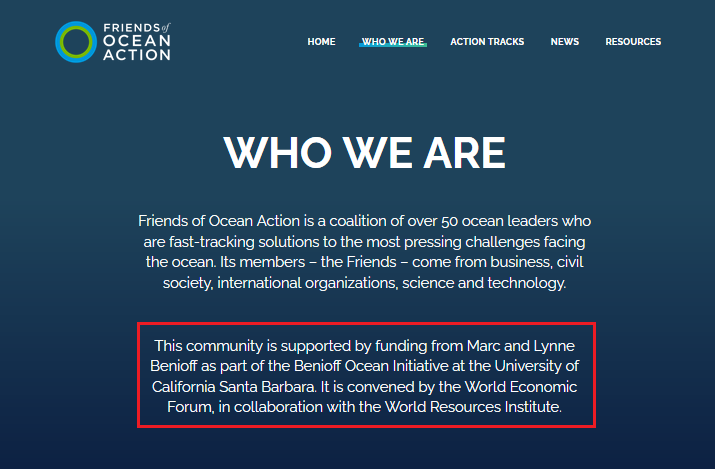
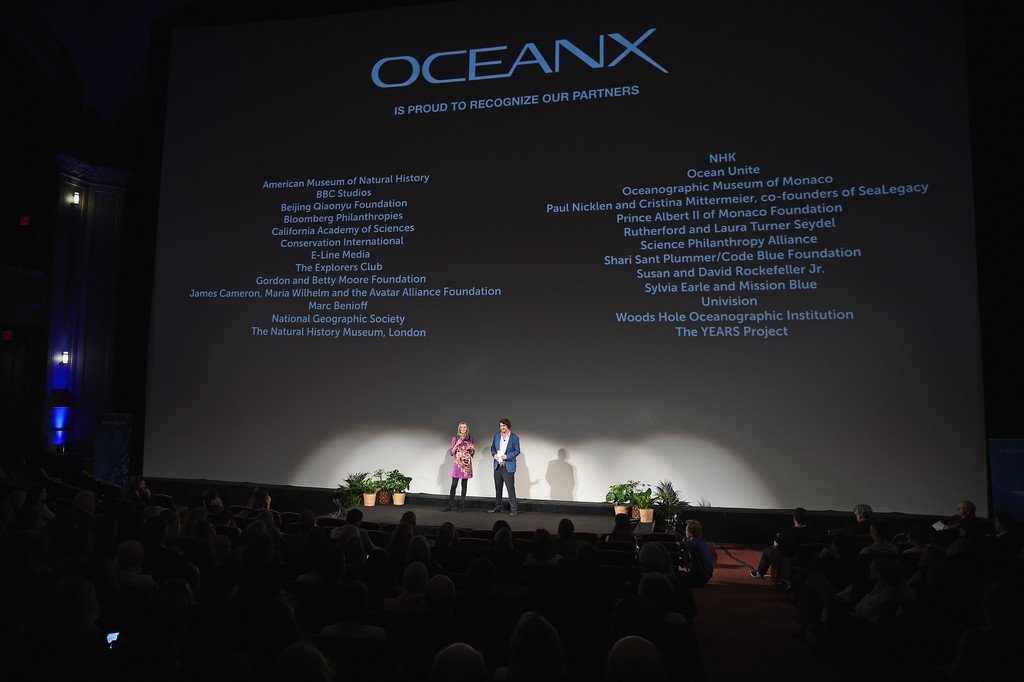


























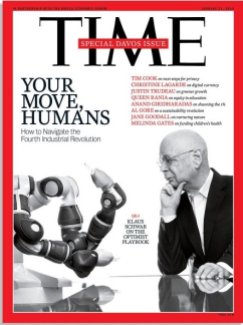 He enthuses: “While it may not feel momentous to those of us experiencing a series of small but significant adjustments to life on a daily basis, it is not a minor change—the Fourth Industrial Revolution is a new chapter in human development, on a par with the first, second and third Industrial Revolutions, and once again driven by the increasing availability and interaction of a set of extraordinary technologies”. (5)
He enthuses: “While it may not feel momentous to those of us experiencing a series of small but significant adjustments to life on a daily basis, it is not a minor change—the Fourth Industrial Revolution is a new chapter in human development, on a par with the first, second and third Industrial Revolutions, and once again driven by the increasing availability and interaction of a set of extraordinary technologies”. (5)

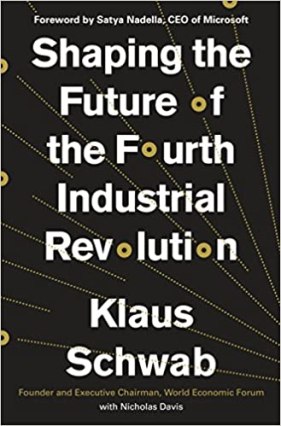 But this does not stop him presenting them in a positive light, as when he declares that “public crime is likely to decrease due to the convergence of sensors, cameras, AI and facial recognition software”. (27)
But this does not stop him presenting them in a positive light, as when he declares that “public crime is likely to decrease due to the convergence of sensors, cameras, AI and facial recognition software”. (27)


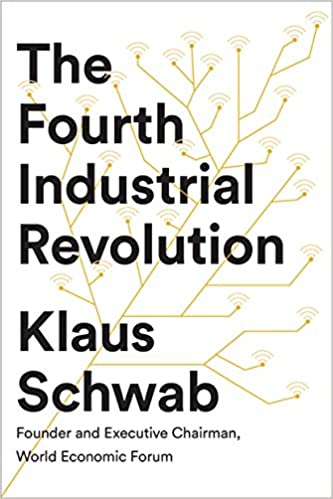 “This gives rise to an inequality that goes beyond the societal one described earlier. This ontological inequality will separate those who adapt from those who resist—the material winners and losers in all senses of the words. The winners may even benefit from some form of radical human improvement generated by certain segments of the fourth industrial revolution (such as genetic engineering) from which the losers will be deprived. This risks creating class conflicts and other clashes unlike anything we have seen before”. (51)
“This gives rise to an inequality that goes beyond the societal one described earlier. This ontological inequality will separate those who adapt from those who resist—the material winners and losers in all senses of the words. The winners may even benefit from some form of radical human improvement generated by certain segments of the fourth industrial revolution (such as genetic engineering) from which the losers will be deprived. This risks creating class conflicts and other clashes unlike anything we have seen before”. (51)
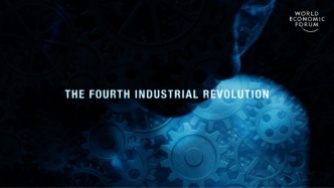 One of these “narratives” whitewashes the reasons for which 4IR technology needs to be installed everywhere in the world as soon as possible.
One of these “narratives” whitewashes the reasons for which 4IR technology needs to be installed everywhere in the world as soon as possible.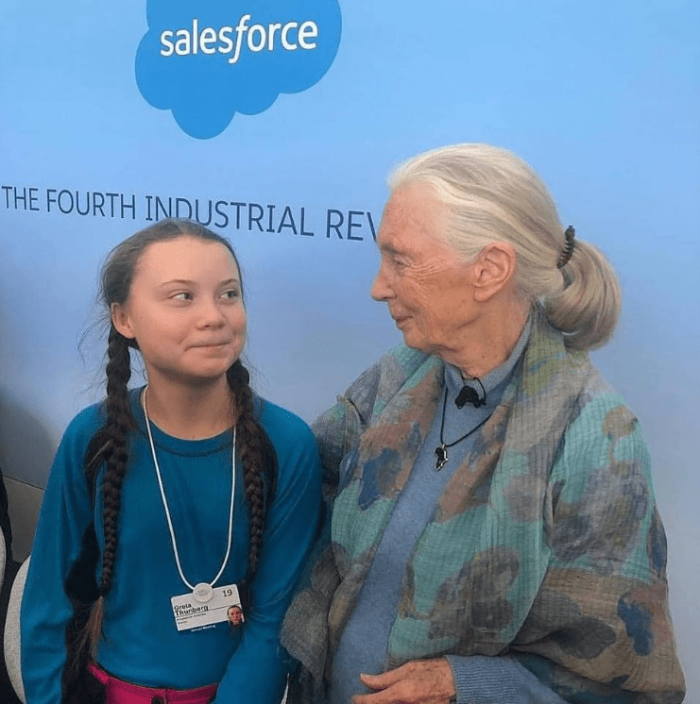









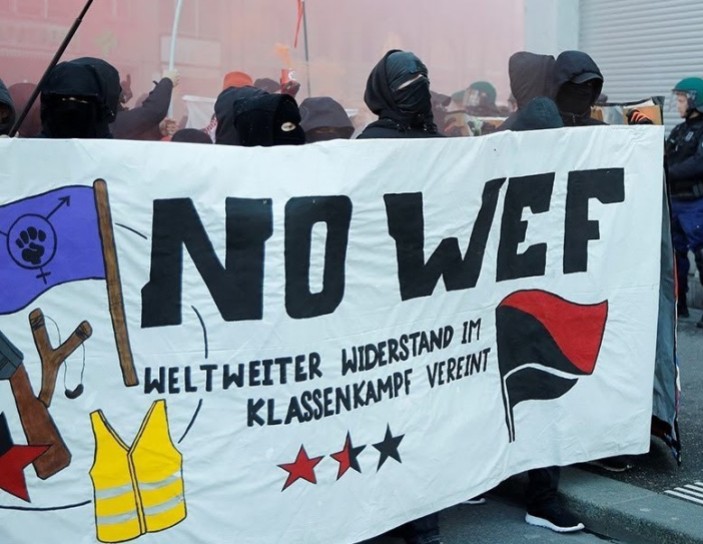









![Source: Indigenous Environmental Network [IEN]](https://i0.wp.com/www.wrongkindofgreen.org/wp-content/uploads/2020/09/IEN-Statement-on-GND-Net-Zero.png?resize=1196%2C358&ssl=1)










